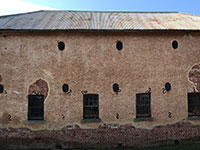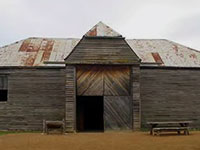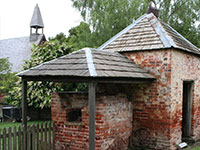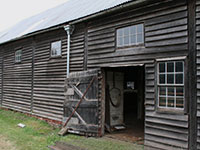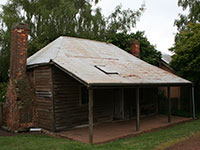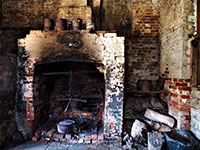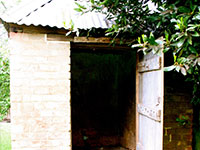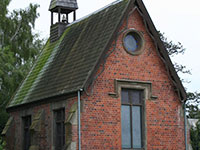Meet a pioneer farming family
Welcome to Brickendon Farm, one of Tasmania’s oldest farming properties. It was first settled in 1824 by William Archer and it is still farmed today by the descendants of the Archer family, seven generations later.
Different produce has been farmed at Brickendon over the years including sheep, cows, pigs, hens and grain.
Over that long period many defining moments shaped the farm and the family who ran it.
In this activity you will get to know how the farm was first set up. You will then decide what some of the big events have been that influenced this pioneer Archer family, their descendants, and ultimately the state of Tasmania.
Start by taking this 'video visit' to Brickendon Farm and decide for yourself whether this family farm represents a defining moment in Tasmania’s history.


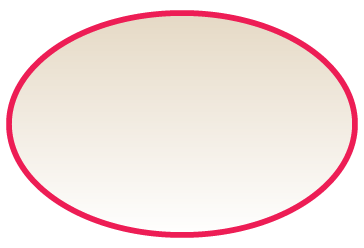

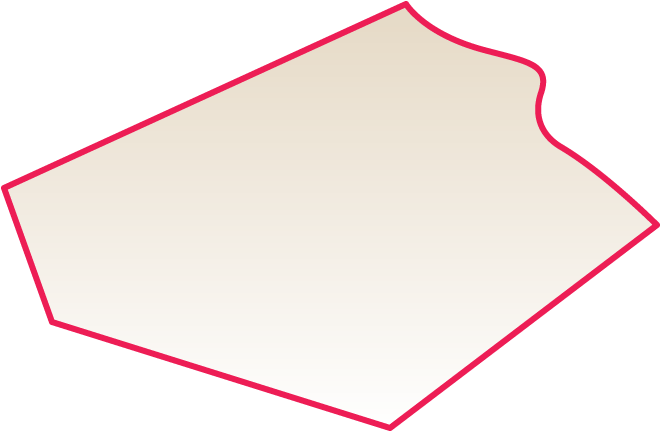

Position the farm
Imagine that you are William Archer, the original owner of Brickendon Farm in 1824. You are about to start your great farming adventure!
Map showing A - unsheltered area, B - away from river, C - hilly area, D - marshlands and E in the center.
Identify the farm buildings
William Archer was given twenty convicts to help him develop his new farm. He employed them at building, fencing, digging drains, sowing and harvesting crops, tending to the livestock, working in the tannery or the forge, cutting timber, brick-making, washing sheep before shearing and taking produce to market.
That’s a lot of farm work!
He was also given female convicts to work as house servants.
Here is a diagram of the farm village buildings as they were in the 1850s. Try to match the photos to the correct buildings and then answer the questions to find out what each was used for.
Well done
You have matched all the photos to the map. You now have the option to select a building you would like to show on your certificate at the end:
Correct!
Now answer yes or no on all the questions below.
Questions
Archer family defining moments
Work out what you think would have been defining moments in this family’s history by matching each defining moment that you choose with one or more of these themes:
- Migration
- Transportation of convicts
- Births, marriages and deaths
- Industry
- Economy
- Disaster
- Agricultural development
- Farm management
Start with 1824 and as you complete each year, the next year will show up until you have finished the timeline.
You scored X points
If you scored:
- More than 23 points – you are a great ‘Defining Moments’ historian!
- 15 to 23 - you definitely show talent.
- Less than 15 points – why not discuss the events with your classmates and have another go.
You can press keep trying to view your timeline and change your answers. You can now also reveal the real answers too. Or continue to the next activity.
How to use
Task 1 - Watch the 'Video Visit' to Brickendon Farm to see how defining moments in Australian history have shaped this family farm and to decide if the farm itself has been a defining moment in Tasmania’s history.
Task 2 - Choose which option works best on the map.
Task 3 - Identify the farm buildings. Click on the markers on the map to see the photo menu. Click on the photos to see enlarged images. Then choose the correct photo by clicking pick. On choosing the correct photo you will see a question appear. On completion you will have matched all the photos to the buildings.
Task 4 - Archer family defining moments. Review each event in the timeline and decide if it was a defining moment and which theme it covers. Press define this event to apply your choices.
Identify the farm buildings
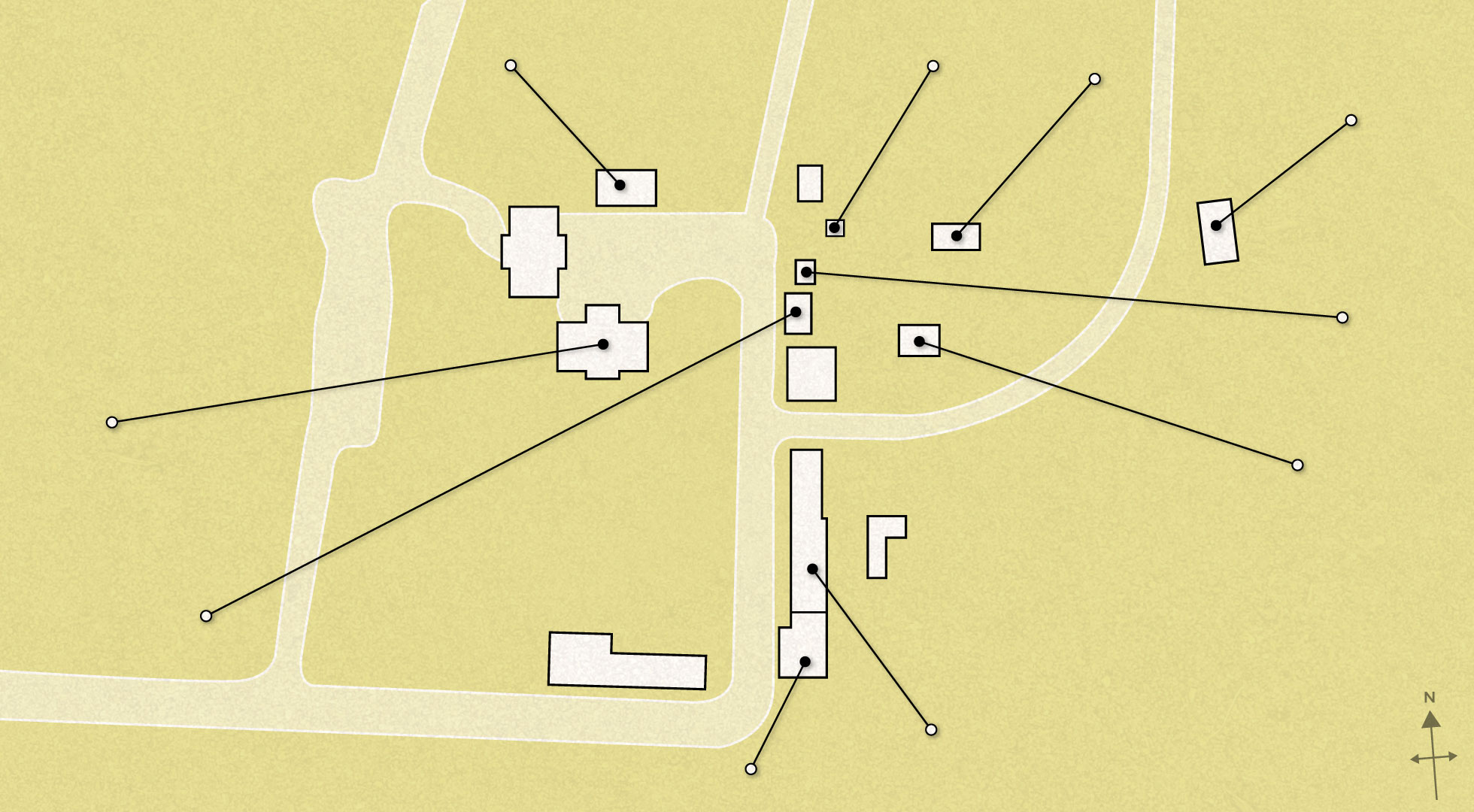
Family defining moments
Select the most appropriate theme(s) for each of the following events.
Then click on 'Yes' if you think any of these events were defining moments in the life of this farming family.
| Dates | Events | Defining Moment Themes | Answer |
|---|---|---|---|
| 1824 | William Archer arrives from England. He brings with him - 77 merino ewes and three rams, a Normande cow and bull, many pigs and two stallions. |
|
|
| 1824 | He receives a land grant of 420 acres. |
|
|
| 1829 | William marries Caroline Harrison. |
|
|
| 1834 | Their third child baby Daniel dies. |
|
|
| 1830s | Due to the skilled labour of the male and female convicts and the supervision of William Archer, the property can now support itself and operates much like a small village. |
|
|
| 1841 | The main house, farm cottage, brick granary, fowl house, smokehouse and oven, chapel and timber barns are all completed. |
|
|
| 1843 | Baby Rowland dies. |
|
|
| 1844 | Banks collapse, as does the price of wheat and wool. |
|
|
| 1845 | Fire destroys part of the main house. |
|
|
| 1848 | Baby George, the 7th child is born. |
|
|
| 1852 | William’s diary reports grubs and caterpillars ‘were doing great mischief to the crops in the fields’. |
|
|
| 1858 | Bushfires and drought ravage the farm. |
|
|
| 1850s | Labour shortage due to the Victorian gold rushes. |
|
|
| 1879 | William dies. His son William Henry Davies Archer takes over the farm. |
|
|
| 1901 | The amount of stock at this time includes: 17 horses; 50 cattle; 94 pigs and 1,261 sheep. The farm buildings consist of: two overseers' cottages; slaughterhouse; smokehouse for hams, bacon etc.; brick chapel, suitable for storing goods; range of stables and loose boxes; a shearing shed; wool loft; sheds for sheep during shearing, for night housing or against rain; a brick granary with every convenience for storing 7,000 or 8,000 bushels of grain; cook house and double cottage for labourers; labourers' cottages; carpenters' and wheelwrights' shops; blacksmith’s shop (with every convenience for farm work); a range of stables; chaff house; and implement shed. All are roofed with iron. |
|
|
| 1900s | During the early 1900s Brickendon is managed for W. H. D. Archer by Robert Kelty and sons. |
|
|
| 1911 | The only surviving son, William Fulbert Archer, now aged 28, takes over management of the farm. W. F. Archer, like his father before him, had studied in England and qualified as a barrister before returning to take over the farm. |
|
|
| 1939- 1945 |
World War II leads to a shortage of labour. More machines were used to do the farm work. |
|
|
| 1949 | Kerry, William’s son, took over the farm. He manages 3,000 sheep, a herd of cows and crops of peas and other cereals. |
|
|
| 1960s | Irrigation is introduced. Kerry brings one of the state’s first irrigator machines. |
|
|
| 1970 | The farm starts to grow poppies. |
|
|
| 1970s | The house is opened to visitors to raise money to preserve the now decaying farm buildings. It is hoped that tourism might now save the old farm. |
|
|

Well done!
Name:
You have chosen .
Decide which three Archer family defining moments were the most important in the history of this family. Record these below and briefly explain why you chose each one. To help with this, see your answers by clicking Back or Print My Timeline.
Now share your ideas with your classmates and come up with a whole class top three defining moments for the Archer family.
This process of looking carefully at events that have shaped a family’s life is exactly what we want you to do as you create your own family history defining moments timeline!
My three top pioneer farming family defining moments
1
2
3
Taking it further
This very experienced Tasmanian farming family has many defining moments. Do you know a family that has lived and worked on the land in Australia? You might now like to research one of these or perhaps explore your own family’s past and discover some defining moments that have shaped its history.

